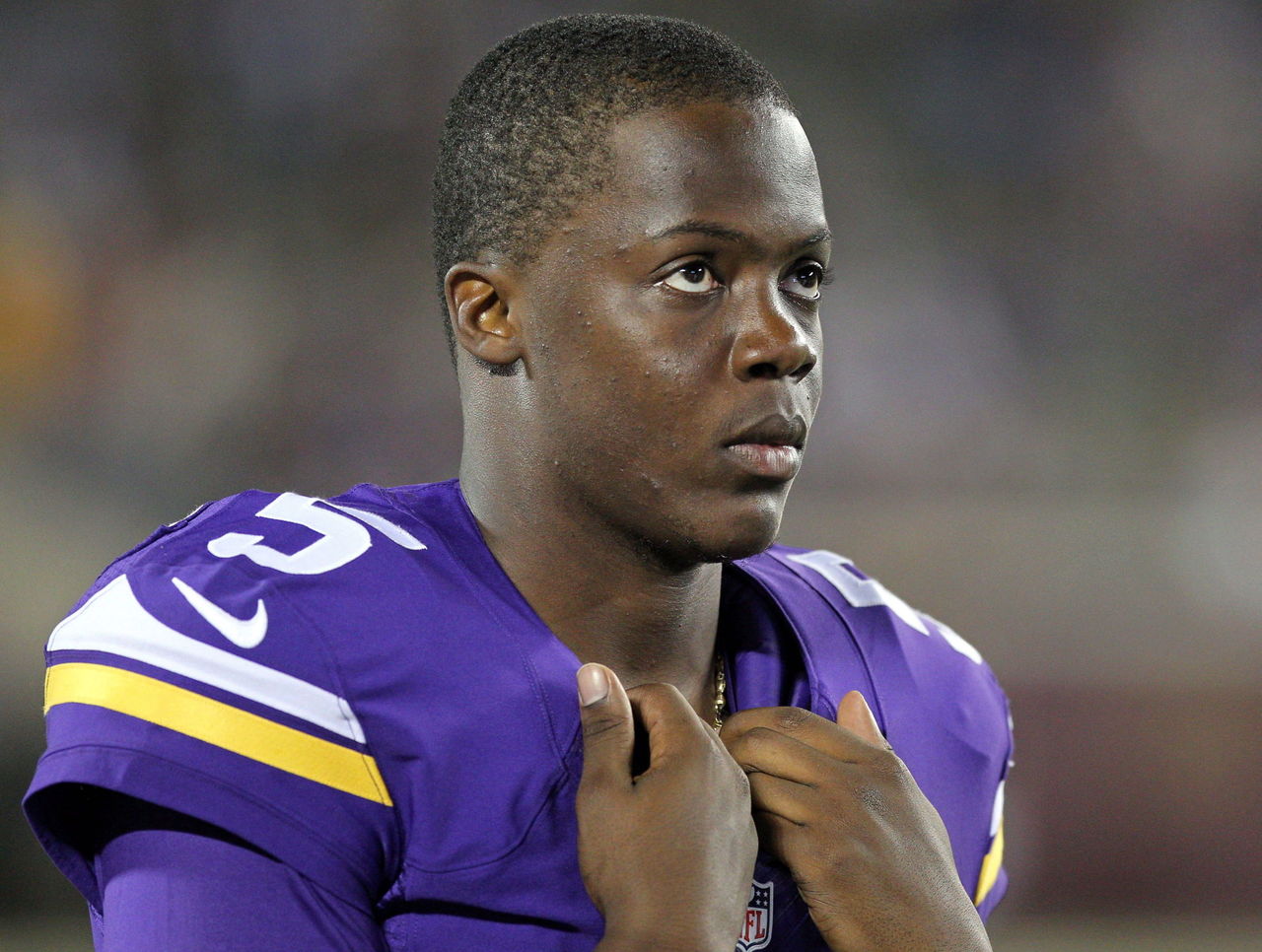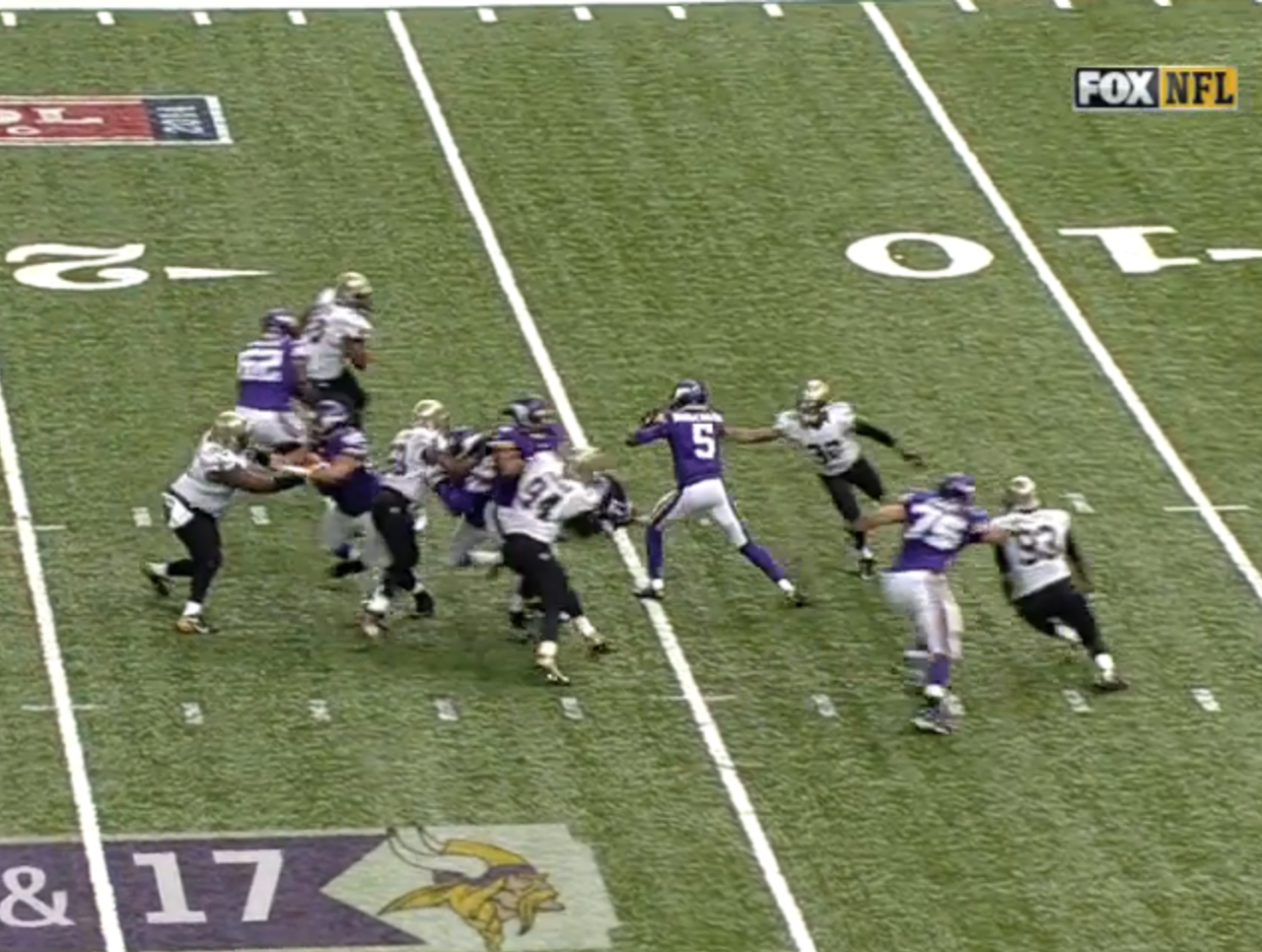Film Room: Breaking down Teddy Bridgewater's Vikings debut
During the New Orleans Saints-Minnesota Vikings game in Week 3, the camera abruptly cut to the Vikings sideline and there was Teddy Bridgewater, dressed in purple, tossing the football around.
He furiously chewed gum and swung his arms in between throws. His face was stoic, and it was hard to tell if he was nervous. If he was, it was understandable. He was suddenly the Vikings' starting quarterback, playing on the road at the Superdome.
Bridgewater wasn’t expected to take the field this early, but when starter Matt Cassel fractured his foot on a second-quarter scramble, the rookie became the go-to guy.

Thrust into action, Bridgewater handled the situation well. He completed 60 percent of his passes and didn’t turn the ball over. For the most part, he appeared calm, but there were a few times when he rushed his throws against the Saints. It's expected because of the circumstance, but it's also something he can work on.
When Bridgewater rushed to get the ball out of his hand, it affected his footwork. On the second-and-9 play below, Bridgewater looked straight to read the defense when he dropped back. It appeared the Saints had a form of a two-deep set and were only rushing three. This meant there was heavy underneath coverage that Bridgewater could take advantage of.
When he hit the top of his drop, he looked to his left, where the running back was running a flat route. An outside linebacker was late getting out to the running back and behind in coverage. It was the perfect opportunity to set up a manageable third down, if not a new set of downs.
But when Bridgewater threw the ball, all of his weight was on his right foot. He didn't roll his hips or bend his knees. Rather, he stood flat-footed.

After the ball came out of his hand, Bridgewater's weight shifted from his right foot to his left foot. His right foot swung across his body and turned his hips away from the throw. The throw was too far out in front of the running back and fell incomplete, bouncing to the sideline.
Short throws are more difficult to make than many realize because they need to be thrown immediately. It's like throwing a screen pass parallel to the line of scrimmage. The ball needs to get out in a hurry and be thrown accurately. Bridgewater wasn't pressured and had time to throw the ball to the running back, eventually leading him out for a possible first down. The receiver to that side cleared out the cornerback enough to give the runner space for meaningful yards, but Bridgewater misfired.
As the game progressed, so did Bridgewater. He became more comfortable and adapted to the speed. He threw with a better base and footwork. He also rolled out of the pocket and made throws on the run.
Two plays after the aforementioned incomplete pass, Bridgewater play-faked to his left and rolled to his right on first-and-10. He had three pass catchers open. Two tight ends were open underneath, one in the middle and another in the flat, and a wide receiver ran a corner route more than a dozen yards downfield.
While Bridgewater rolled out, he kept both hands on the ball and squared his hips when he threw it.

The ball was thrown high and a couple of yards from the sideline where only the receiver could catch it for 14 yards. It was nearly perfect.
A lot of young quarterbacks make mistakes when rolling out. They don't square their hips, which is troublesome because they're taught to point them at their target. When they don't, the throw has less velocity and is often off the mark. Young quarterbacks also tend to check down when they have open receivers deep, as sometimes seen with EJ Manuel of the Buffalo Bills.
Passes with a comfortable pocket are expected to be made. What separates the great from the good are throws under pressure. Many quarterbacks shrink when linebackers are barreling down on them. For one game, Bridgewater showed he could hang in the pocket when needed.
In this five-man blitz, Bridgewater took a quick drop back while pressure came from both ends. The Saints tried to force the rookie into a turnover on second-and-17, but they were surprised when his back foot hit the top of his drop and he hitch-stepped forward. One rusher tried to arm-tackle him, but Bridgewater held the ball with both hands and powered through it.

He threw the ball to his wide receiver for 15 yards as another rusher slapped and turned his head. Suddenly it was third-and-2.
Bridgewater has the potential to be the Vikings' quarterback of the present and future. Although it’s still early to judge, he appeared to find comfort in a tough environment as the game progressed. He made big throws and missed small ones, which is all part of the learning curve in the NFL.
Considering the circumstance, the Vikings couldn't have asked for more.